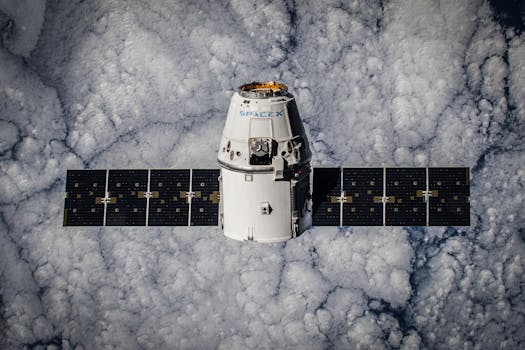
The Future of Satellites is an exciting and rapidly evolving field, with new technologies and innovations emerging every year. The future of satellites is revolutionizing the way we explore space, communicate with each other, and understand our planet. From satellite constellations to advanced propulsion systems, the possibilities are endless.
Satellites have been a crucial part of space exploration for decades, providing a means of communication, navigation, and remote sensing. However, with the advancement of technology, satellites are becoming more sophisticated and capable of performing a wide range of tasks. One of the most significant developments in satellite technology is the emergence of satellite constellations. These constellations consist of multiple satellites working together to provide global coverage and enable real-time communication.
Advancements in Satellite Technology
Recent advancements in satellite technology have enabled the development of smaller, more efficient, and cost-effective satellites. One of the key drivers of this trend is the use of commercial off-the-shelf (COTS) components, which has reduced the cost and increased the availability of satellite hardware. Additionally, the use of advanced materials and manufacturing techniques has enabled the creation of lighter and more efficient satellites.
Another area of advancement is in propulsion systems. Traditional propulsion systems have been limited by their fuel efficiency and specific impulse. However, new technologies such as ion engines and hall effect thrusters are providing more efficient and longer-lasting propulsion systems. These advancements are enabling satellites to stay in orbit for longer periods and to travel further distances.
Applications of Satellite Technology
Satellite technology has a wide range of applications, from communication and navigation to remote sensing and scientific research. One of the most significant applications is in the field of communication, where satellites are used to provide internet access, voice communication, and data transmission. Satellite communication is particularly important in remote and underserved areas, where traditional communication infrastructure is limited or non-existent.
Satellites are also used for navigation, providing location information and timing signals for GPS and other navigation systems. Remote sensing is another key application, where satellites are used to collect data on the environment, climate, and natural resources. This data is used for a wide range of purposes, from weather forecasting and climate modeling to land use planning and natural resource management.
Challenges and Opportunities
Despite the many advancements in satellite technology, there are still several challenges that need to be addressed. One of the major challenges is the issue of space debris, which poses a significant risk to the safety and sustainability of space exploration. Another challenge is the need for more efficient and sustainable propulsion systems, as well as the development of more advanced materials and manufacturing techniques.
However, these challenges also present opportunities for innovation and growth. The development of new technologies and innovations is driving the growth of the satellite industry, creating new opportunities for businesses, governments, and individuals. The future of satellites is exciting and rapidly evolving, with new developments and advancements emerging every year.

